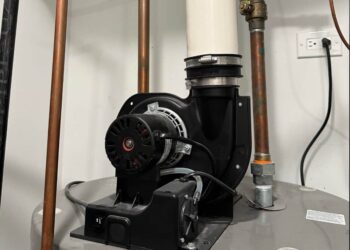Soil drilling is a crucial technique used in various fields such as agriculture, construction, environmental studies, and geological surveys. Modern soil drilling methods have evolved significantly, offering greater efficiency, precision, and versatility.
This guide explores the latest soil drilling methods, their applications, and the benefits they bring to different industries. Whether you’re a professional or an enthusiast, understanding these methods can help you choose the best approach for your needs.
Overview of Soil Drilling
Soil drilling involves creating holes in the ground to collect soil samples, install structures, or facilitate the extraction of resources. The choice of drilling method depends on several factors, including the purpose of drilling, soil type, depth required, and environmental considerations. Modern advancements have introduced a range of techniques that cater to diverse requirements, ensuring that drilling operations are conducted effectively and safely.
One of the most commonly used methods in soil drilling is auger drilling. This technique employs a helical screw, or auger, to penetrate the soil and bring up material to the surface. Auger drilling is ideal for shallow to moderately deep holes and is widely used in environmental sampling, geotechnical investigations, and agricultural applications. The simplicity and efficiency of this method make it a popular choice for many projects.
Rotary Drilling
Rotary drilling is a versatile and widely-used method suitable for drilling through various soil types and rock formations. This technique involves rotating a drill bit to cut through the soil and rock, with the cuttings brought to the surface using drilling fluids. Rotary drilling is known for its ability to reach significant depths and is commonly used in oil and gas exploration, water well drilling, and mineral extraction.
Types of Rotary Drilling
Air Rotary Drilling: Uses compressed air to bring cuttings to the surface. It is efficient for drilling in dry, hard formations.
Mud Rotary Drilling: Employs drilling mud (a mixture of water and clay) to stabilize the borehole and transport cuttings. This method is suitable for softer and more unstable soils.
Percussion Drilling
Percussion drilling, also known as cable tool drilling, involves repeatedly lifting and dropping a heavy drill bit to break up the soil and rock. The debris is then removed using a bailer. This traditional method is effective for drilling through hard rock formations and is still used in certain applications such as water well drilling and geothermal energy projects.
Advantages of Percussion Drilling
Simplicity: Requires less complex equipment compared to rotary drilling.
Cost-Effective: Lower operational costs, especially for small-scale projects.
Versatility: Can be used in a variety of soil and rock conditions.
Sonic Drilling
Sonic drilling is a modern technique that uses high-frequency, resonant energy to penetrate the ground. The drill head oscillates at sonic frequencies, reducing soil friction and allowing for faster penetration with minimal disturbance. Sonic drilling is particularly effective for environmental sampling, geotechnical investigations, and mineral exploration.
Benefits of Sonic Drilling
Speed: Faster drilling rates compared to traditional methods.
Sample Quality: Provides continuous, undisturbed core samples.
Environmental Impact: Minimal disruption to surrounding soil and groundwater.
Direct Push Technology
Direct push technology (DPT), also known as push probing, involves driving a sampling device or probe into the ground using hydraulic force. This method is ideal for shallow investigations and is commonly used in environmental assessments, soil sampling, and groundwater monitoring. DPT equipment is portable and can be operated in confined spaces, making it suitable for urban and sensitive environments.
Applications of Direct Push Technology
Environmental Remediation: Used to collect soil and groundwater samples for contamination assessment.
Geotechnical Testing: Helps determine soil properties for construction projects.
Archaeological Surveys: Non-intrusive method for exploring potential archaeological sites.
Horizontal Directional Drilling
Horizontal directional drilling (HDD) is an advanced technique used to install underground pipelines and cables without extensive excavation. HDD involves drilling a pilot hole along a predetermined path, enlarging the hole through reaming, and then pulling the pipe or cable into place. This method is essential for utility installation, especially in urban areas where minimal surface disruption is required.
Advantages of Horizontal Directional Drilling
Minimal Surface Disruption: Ideal for installing utilities under roads, rivers, and buildings.
Precision: Accurate placement of pipes and cables.
Environmental Benefits: Reduced impact on the environment compared to traditional trenching methods.
Microtunneling
Microtunneling is a trenchless technology used for installing pipelines and conduits in urban and environmentally sensitive areas. This method involves using a remotely controlled microtunneling machine to bore through the ground and simultaneously install the pipeline. Microtunneling is particularly effective for large-diameter pipelines and projects requiring high precision.
Key Features of Microtunneling
Remote Operation: Enhances safety by reducing the need for manual labor in confined spaces.
Accuracy: Provides precise control over the alignment and gradient of the pipeline.
Environmental Protection: Minimizes surface disruption and reduces the impact on surrounding ecosystems.
Choosing the Right Drilling Method
Selecting the appropriate soil drilling method depends on several factors:
Project Requirements: Consider the purpose of drilling, desired depth, and diameter of the borehole.
Soil and Rock Conditions: Evaluate the type of soil and rock formations to determine the most suitable drilling technique.
Environmental Impact: Assess the potential environmental impact and choose methods that minimize disruption.
Equipment Availability: Ensure the availability of the necessary equipment and expertise for the chosen method.
Cost and Time: Balance the budget and timeline constraints with the efficiency and effectiveness of the drilling method.
Modern soil drilling methods offer a range of options to meet the diverse needs of various industries. From the simplicity of auger drilling to the advanced capabilities of sonic drilling and horizontal directional drilling, each method has its unique advantages and applications.
By understanding the different techniques and their benefits, you can make informed decisions to ensure successful and efficient soil drilling projects. Whether you’re involved in environmental studies, construction, or resource extraction, choosing the right drilling method will help you achieve your goals while minimizing environmental impact and maximizing productivity.





